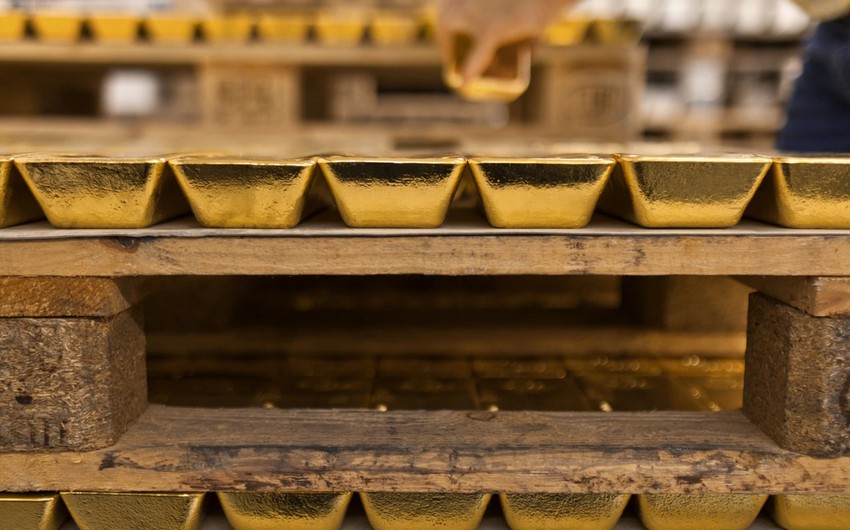Central banks are scooping up gold at the fastest pace since 1967, with analysts pinning China and Russia as big buyers in an indication that some nations are keen to diversify their reserves away from the dollar, Report informs via the Financial Times.
Data compiled the World Gold Council, an industry-funded group, has shown demand for the precious metal has outstripped any annual amount in the past 55 years. Last month’s estimates are also far larger than central banks’ official reported figures, sparking speculation in the industry over the identity of the buyers and their motivations.
The flight of central banks to gold “would suggest the geopolitical backdrop is one of mistrust, doubt and uncertainty” after the US and its allies froze Russia’s dollar reserves, said Adrian Ash, head of research at BullionVault, a gold marketplace.
The last time this level of buying was seen marked a historical turning point for the global monetary system. In 1967, European central banks bought massive volumes of gold from the US, leading to a run on the price and the collapse of the London Gold Pool of reserves. That hastened the eventual demise of the Bretton Woods System that tied the value of the US dollar to the precious metal.
Last month the WCG estimated the world’s official financial institutions have bought 673 tonnes. And in the third quarter alone central banks bought almost 400 tonnes of gold, the largest three-month binge since quarterly records began in 2000.
The conservative estimates from the WGC outstrips the reported purchases to the IMF and by individual central banks, which stands at 333 tonnes in the nine months to September.
Officially, the buying in the third quarter was led by Turkiye at 31 tonnes, taking gold to about 29 per cent of its total reserves. Uzbekistan followed with 26 tonnes, while in July Qatar made its largest monthly acquisition on record since 1967.
The discrepancy between the WGC’s estimates and officially reported figures tracked by the IMF can be partly explained by government agencies besides the central banks in Russia, China and others that can buy and hold gold without reporting them as reserves.
Acknowledging its intake — but also possibly trying to signal its limited role — the People’s Bank of China (PBoC) reported earlier this month that in November it made its first increase in gold holdings since 2019, with a 32-tonne bump worth about $1.8bn. Yet the gold industry says Chinese buying is almost certainly higher.
For Russia, sanctions have created significant problems for its gold mining industry — the largest in the world after China — in selling overseas. It produces roughly 300 tonnes each year but has a domestic market for only 50 tonnes, according to MKS PAMP.
At the same time, western governments have frozen $300bn of Russia’s foreign currency reserves through sanctions.




